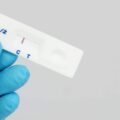How long does it take for HIV to appear after infection?
HIV infection is called the plague of the 21st century. The cause of the disease is the entry of the human immunodeficiency virus into the body. The rate of development of the infection cannot be predicted: it depends on the health status of the infected person, the strength of the immune defense, as well as concomitant diseases. However, there are still some patterns.
Incubation period
When answering the question of how long it takes for HIV to manifest itself after infection, it is impossible to give an exact figure. Immediately after the virus enters the bloodstream, the so-called incubation period begins, during which the person does not have any symptoms. The infected person becomes a carrier, posing a huge danger to others: unaware that HIV is circulating in his blood, he can transmit the infection to other people.
Sometimes the incubation period is called the window period. Lasts from 2 to 24 weeks. The duration of the period depends on the state of the immune system: the weaker it is, the faster the symptoms will appear.
Acute phase
The acute phase occurs 2-24 weeks after infection. At this time, the number of viral particles in the blood increases so much that a person may notice symptoms of infection. Answering the question of when HIV can be detected after infection, we can give the figure 2-24 weeks (on average - 6-12 weeks).
An infected person may exhibit the following symptoms:
- enlarged lymph nodes (in the groin, armpit, neck);
- increased body temperature;
- night sweats;
- increased fatigue, weakness, drowsiness;
- candidiasis (genital and oral cavity);
- diarrhea not associated with changes in diet;
- discomfort in the muscles.
Often, such symptoms are attributed to a cold and the person does not see a doctor, self-medicating. After a few weeks, signs of infection disappear, and a balance is established between the rate of virus reproduction and the immune response.
Latent period
How long does it take for HIV infection to manifest itself with clear symptoms that cannot be confused with other diseases? On average, this occurs 7-10 years after infection. During this time, the immune system copes with increased stress. In this case, there is a rather characteristic sign: a person’s lymph nodes are enlarged for no reason. At the same time, he may often suffer from infectious diseases.
During the latent period, HIV can be detected after infection during a medical examination. Also at this time, an increased level of lymphocytes and leukocytes is detected in the blood, and signs of mononucleosis appear.
How long does it take for HIV to be transmitted after infection? A person becomes contagious several weeks after the virus enters the body. However, during the latent phase, he does not suspect that he is sick, as a result of which he can infect many other people.
Pre-AIDS
A few years after the virus enters the body, the pre-AIDS stage begins. The immune system ceases to cope with the viral load, as a result of which a person’s existing chronic diseases begin to worsen, for example, herpes infection, candidiasis and stomatitis.
How long does it take for pre-AIDS to occur after HIV infection? As a rule, this stage occurs 1-2 years after the end of the latent period.
Final stage
HIV infection fully manifests itself after 10-15 years: how long it takes depends on the condition of the person’s body. AIDS is the terminal stage of HIV infection, which occurs when the immune system is almost completely destroyed. At this stage, the development of meningitis, encephalitis, malignant tumors, and pneumonia is possible.
There is no cure for AIDS. If the infection has reached this stage, death is inevitable. Only supportive therapy aimed at alleviating the patient's condition is possible.
When will an HIV test give a positive result?
An important question is how long it takes for HIV to be detected after infection. The test will be negative during the window period when the virus is just beginning to multiply in the body. For this reason, if a person has had unprotected sex and there is a risk of infection, an HIV test should be done after three weeks. Three months later, the test must be repeated, regardless of the result of the first: it is impossible to predict how long it takes for HIV infection to manifest itself after infection.
It is important to remember that the timing of detection of antibodies to the virus in the blood can vary greatly. How long does it take to donate blood for HIV? There are some rules about this. In approximately 95% of people, they are detected 3 months after infection. After six months, antibodies appear in 5% of people. Therefore, in doubtful cases, it is important to repeat the analysis, and people who are at risk of infection (for example, doctors) are recommended to take an HIV test once every six months.
Once HIV infection is detected, the viral load should be determined. This test aims to detect the number of viral particles in the body. The more there are, the brighter the symptoms of the disease.
How to protect yourself?
Knowing how long it takes for HIV to be detected after infection, you should be regularly tested for the presence of antibodies to the virus in your blood. This will help start treatment on time and prevent HIV infection from developing into acquired immunodeficiency syndrome.
Unprotected sexual contact with unreliable partners should not be allowed. The most reliable means of protection against infection is a condom.
If the risk of infection is high, you should undergo a second examination: it is impossible to predict how long the test will show HIV after infection. From the moment of infection to the appearance of antibodies in the blood, it can take from several weeks to six months.
When is HIV detected after infection? Doctors call the period from two weeks to six months. Therefore, it is important to closely monitor your health and undergo regular antibody testing!




